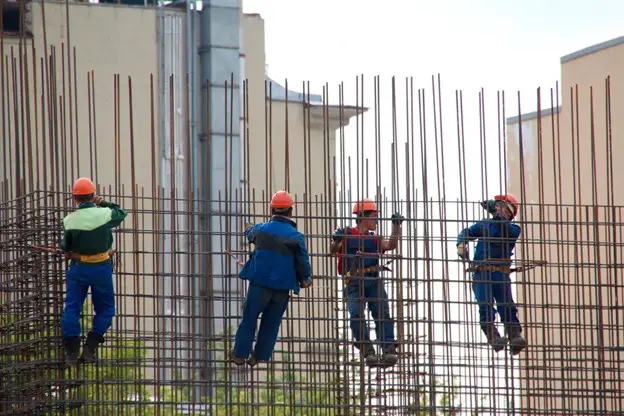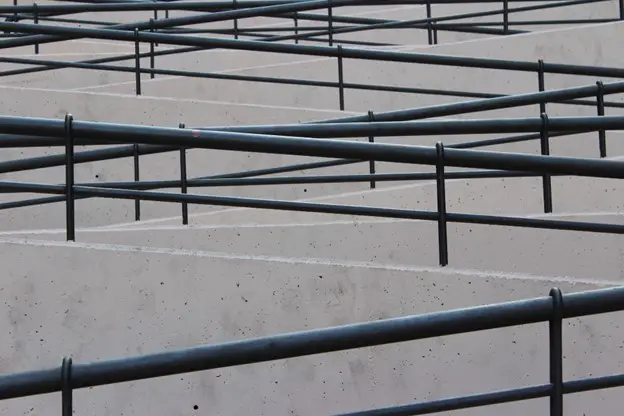Mastering techniques for concrete structures, Building formwork material, Property structural integrity, Engineered systems
The Art of Formwork: Mastering Techniques for Concrete Structures
15 March 2024
Concrete structures, known for strength and durability, are widely used in construction for their versatility and cost-effectiveness. Constructing them involves careful planning, preparation, and execution. Formwork, the mold holding wet concrete until it hardens, is crucial for creating quality structures. This guide explores formwork techniques for successful concrete construction, covering basics to advanced methods.
The Importance of Formwork in Concrete Construction
Formwork plays a critical role in concrete construction, as it provides the necessary support and shape for wet concrete until it cures and becomes self-supporting. Without proper formwork, the structural integrity of a concrete structure can be compromised, leading to costly repairs and safety hazards. For instance, as seen on Deslauriers, mastering the art of formwork is important for achieving high-quality and durable concrete structures. From ensuring proper alignment and leveling to controlling the placement of reinforcement, formwork allows for precise and efficient construction, resulting in superior end products.
Types of Formwork
There are various types of formwork available, each with its unique advantages and disadvantages. The type of formwork used depends on the specific requirements of the project, including shape, size, complexity, and budget. Some common types of formwork include traditional timber formwork, engineered formwork systems, and modular panel systems.
Traditional timber formwork is a popular choice due to its affordability, versatility, and ease of use. However, it may not be suitable for complex or large-scale projects. On the other hand, engineered formwork systems offer more flexibility and faster assembly but can be expensive. Modular panel systems are a combination of both traditional timber and engineered formwork, offering ease of installation and customization options at a reasonable cost.
Planning and Preparation
The first step is to thoroughly analyze the project requirements, including the structural design, dimensions, loads, and timeline. This information will determine the type of formwork needed and the necessary materials and equipment. Next, a detailed plan should be created, outlining all the steps from assembly to removal of the formwork. The plan should also include safety measures and contingencies for unforeseen circumstances. Proper preparation is crucial for effective formwork construction. This includes preparing the site, ensuring a solid and level foundation, and properly treating the formwork to prevent concrete from sticking or leaking. Adequate bracing and support should also be in place to withstand the weight of wet concrete.
Material Selection and Construction Techniques for Efficient Formwork
Selecting the right materials and using proper construction techniques are essential for efficient formwork. Materials should be strong, durable, and able to withstand the pressure of wet concrete. Commonly used materials include timber, steel, aluminum, and plastic. Each material has its advantages and limitations, so choosing the most suitable one for a particular project is at the discretion of the engineer or contractor.
Construction techniques also play a significant role in efficient formwork. This involves employing the appropriate assembly method, securing tight joints to avoid leaks, and implementing proper bracing for stability. Moreover, proper concrete placement techniques should be followed to avoid air pockets and ensure even distribution of concrete for a smooth finish.
Advanced Forming Systems
As technology continues to advance, so does the field of formwork. Advanced forming systems have emerged, offering innovative methods for constructing concrete structures. These systems utilize techniques such as slip-forming, jump-forming, and climbing formwork to achieve unprecedented heights and complex shapes with minimal labor and time. They also provide greater precision and control over the pouring process, resulting in higher quality and cost-effective structures. As these systems continue to develop, engineers and contractors must stay updated on the latest advancements to utilize them effectively in their projects.
Best Practices for Ensuring Quality and Safety in Formwork
To ensure the quality and safety of formwork, some best practices should be followed. Firstly, regular inspections of the formwork should be conducted to check for any damage or defects. Any issues should be addressed immediately to prevent accidents or structural failures. Secondly, proper training and supervision of workers involved in formwork construction is crucial to avoid mistakes and ensure correct procedures are followed. Thirdly, adhering to safety guidelines and regulations is essential for the well-being of workers and the success of the project. Lastly, using high-quality materials and following proper construction techniques will result in a strong and durable formwork that can withstand the pressure of wet concrete.
Maintenance and Repairs
Maintenance and repairs are essential for extending the lifespan of formwork and ensuring long-term success. Regular cleaning, proper storage, and timely repairs can prolong the usability of formwork materials, saving costs on replacement. Proper maintenance also ensures that formwork is in good condition for future use, reducing project downtime and increasing efficiency. In cases where repairs are necessary, use the correct materials and techniques to maintain the structural integrity of the formwork.
The art of formwork is a fundamental aspect of concrete construction that requires precision, proper planning, and skillful execution. With proper maintenance and repairs, formwork can continue to be a cost-effective solution for creating strong and durable concrete structures for years to come. Building upon this foundation will not only benefit the construction industry but also contribute to creating a more sustainable and resilient built environment for generations to come.
Comments on this guide to The Art of Formwork: Mastering Techniques for Concrete Structures article are welcome.
Concrete Structures
New vaulted style of floor cuts concrete usage
Ground granulated blast furnace slag in concrete production
Concrete – Delivering beyond net Zero

Enhance home curb appeal with custom concrete work
Concrete Construction
Benefits of Concrete in Construction
Quality Precast Concrete for Your Investment
How to pour a concrete patio guide
How to cast custom concrete fountains
Architecture Design
A seleciton of recent climate change posts on e-architect:
Net Zero Carbon Buildings Standard
Difference between carbon neutrality and net zero
Comments / photos for the Mastering techniques for concrete structures page welcome






